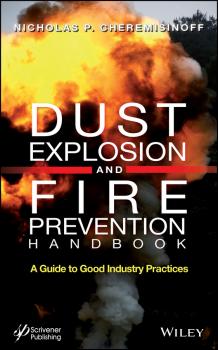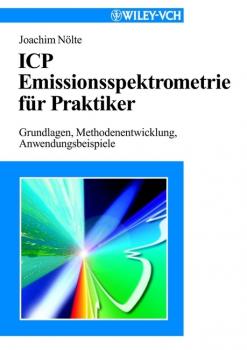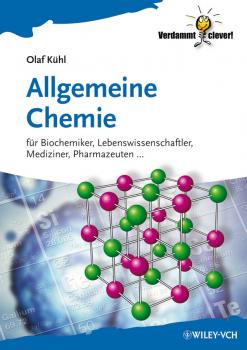Прочая образовательная литература
Различные книги в жанре Прочая образовательная литератураDust Explosion and Fire Prevention Handbook. A Guide to Good Industry Practices
This handy volume is a ready “go to” reference for the chemical engineer, plant manager, process engineer, or chemist working in industrial settings where dust explosions could be a concern, such as the process industries, coal industry, metal industry, and others. Though dust explosions have been around since the Earth first formed, and they have been studied and written about since the 1500s, they are still an ongoing concern and occur almost daily somewhere in the world, from bakeries to fertilizer plants. Dust explosions can have devastating consequences, and, recently, there have been new industrial standards and guidelines that reflect safer, more reasonable methods for dealing with materials to prevent dust explosions and resultant fires. This book not only presents these new developments for engineers and managers, but it offers a thorough and deep coverage of the subject, starting with a complete overview of dust, how it forms, when it is in danger of exploding, and how this risk can be mitigated. There is also a general coverage of explosions and the environments that foster them. Further chapters cover individual industries, such as metal and coal, and there is an appendix that outlines best practices for preventing dust explosions and fire and how these risks can be systematically mitigated by these implementations. There is also a handy glossary of terms for easy access, not only for the veteran engineer or chemist, but for the student or new hire. This ready reference is one of the most useful texts that an engineer or chemist could have at their side. With so many accidents still occurring in industry today and so many hazards, this volume pinpoints the most common and easiest ways for the engineer to go about his daily business safely, efficiently, and profitably, with no extraneous tables or theoretical treatises. A must have for any engineer, scientist, or chemist working with materials that could result in dust explosions or fire.
Early Earth Systems. A Geochemical Approach
Early Earth Systems provides a complete history of the Earth from its beginnings to the end of the Archaean. This journey through the Earth's early history begins with the Earth's origin, then examines the evolution of the mantle, the origin of the continental crust, the origin and evolution of the Earth's atmosphere and oceans, and ends with the origin of life. Looks at the evidence for the Earth's very early differentiation into core, mantle, crust, atmosphere and oceans and how this differentiation saw extreme interactions within the Earth system. Discusses Archaean Earth processes within the framework of the Earth System Science paradigm, providing a qualitative assessment of the principal reservoirs and fluxes in the early Earth. “The book would be perfect for a graduate-level or upper level undergraduate course on the early Earth. It will also serve as a great starting point for researchers in solid-Earth geochemistry who want to know more about the Earth’s early atmosphere and biosphere, and vice versa for low temperature geochemists who want to get a modern overview of the Earth’s interior.” Geological Magazine, 2008
Electron Flow in Organic Chemistry. A Decision-Based Guide to Organic Mechanisms
Sets forth the analytical tools needed to solve key problems in organic chemistry With its acclaimed decision-based approach, Electron Flow in Organic Chemistry enables readers to develop the essential critical thinking skills needed to analyze and solve problems in organic chemistry, from the simple to complex. The author breaks down common mechanistic organic processes into their basic units to explain the core electron flow pathways that underlie these processes. Moreover, the text stresses the use of analytical tools such as flow charts, correlation matrices, and energy surfaces to enable readers new to organic chemistry to grasp the fundamentals at a much deeper level. This Second Edition of Electron Flow in Organic Chemistry has been thoroughly revised, reorganized, and streamlined in response to feedback from both students and instructors. Readers will find more flowcharts, correlation matrices, and algorithms that illustrate key decision-making processes step by step. There are new examples from the field of biochemistry, making the text more relevant to a broader range of readers in chemistry, biology, and medicine. This edition also offers three new chapters: Proton transfer and the principles of stability Important reaction archetypes Qualitative molecular orbital theory and pericyclic reactions The text's appendix features a variety of helpful tools, including a general bibliography, quick-reference charts and tables, pathway summaries, and a major decisions guide. With its emphasis on logical processes rather than memorization to solve mechanistic problems, this text gives readers a solid foundation to approach and solve any problem in organic chemistry.
Self-Assembled Supramolecular Architectures. Lyotropic Liquid Crystals
This book will describe fundamentals and recent developments in the area of Self-Assembled Supramolecular Architecture and their relevance to the understanding of the functionality of membranes as delivery systems for active ingredients. As the heirarchial architectures determine their performance capabilities, attention will be paid to theoretical and design aspects related to the construction of lyotropic liquid crystals: mesophases such as lamellar, hexagonal, cubic, sponge phase micellosomes. The book will bring to the reader mechanistic aspects, compositional considerations, transition within phases, solubilization capacities, drug entrapment and release mechanisms and transmembrane, transdermal, and other transport phenomena. It will stress the importance of these mesostructures to crystallization and polymorphism of drugs, fats, and nutraceuticals and will discuss regioselectivity of organic and enzymatic reactions that take place at interfaces and within the channels of the mesophase. The book will bring studies on the use of these mesophase as crystallization or particulation media for the formation of nanoparticles and nanocrystals. Chapters will discuss applications in the areas of pharmaceuticals, food, cosmetics, plastics, paper, agro-chemistry and industrial applications.
Learning the City. Knowledge and Translocal Assemblage
Learning the City: Translocal Assemblage and Urban Politics critically examines the relationship between knowledge, learning, and urban politics, arguing both for the centrality of learning for political strategies and developing a progressive international urbanism. Presents a distinct approach to conceptualising the city through the lens of urban learning Integrates fieldwork conducted in Mumbai's informal settlements with debates on urban policy, political economy, and development Considers how knowledge and learning are conceived and created in cities Addresses the way knowledge travels and opportunities for learning about urbanism between North and South
ICP Emissionsspektrometrie für Praktiker. Grundlagen, Methodenentwicklung, Anwendungsbeispiele
Das Basis-Know-how fur richtige ICP-OES-Analytik! Erstmalig ist eine deutschsprachige, leicht verstandliche und anwenderorientierte Einfuhrung in die ICP-Emissionspektrometrie verfugbar. Sie umfa?t die praxisrelevanten Grundlagen, geratetechnische Informationen, eine Anleitung zur Methodenentwicklung und viele praktische Anwendungsbeispiele. Das Buch ist kompakt und sehr ubersichtlich gestaltet, mit Infoboxen zu typischen Fragen und Problemen, Checklisten und detaillierten Hinweisen zur Handhabung. Es ist nicht nur ein Begleiter fur die eigenstandige Aus- und Weiterbildung, sondern ebenso ein verlasslicher Leitfaden fur die praktische Laborarbeit, denn auch die Aspekte Pflege und Wartung sowie Trouble-Shooting kommen nicht zu kurz. Alle Anwender der ICP-OES konnen vom bewahrten Erfahrungsschatz des Autors profitieren, den er in zwei Jahrzehnten bei der Ausbildung und Beratung von Anwendern sowie bei der Gerateentwicklung gesammelt hat. Er war Mitarbeiter eines fuhrenden Gerateherstellers und ist jetzt freiberuflicher Berater.
Wissen macht schlau. Grosse Themen leicht erzählt
Klimawandel, Finanzkrise oder mogliche Nebenwirkungen von Medikamenten – es scheint in unserer modernen Zeit immer schwieriger zu werden, den Durchblick zu behalten, Zusammenhange zu verstehen oder Risiken einschatzen zu konnen. Wilfried H. Lindenzweig macht uns Mut: Vieles ist nicht so kompliziert, wie von uns befurchtet – schon gar nicht, wenn es uns jemand wie Lindenzweig erklart. Lesen und dann mitreden konnen, hei?t also die Devise. Ein Buch fur alle, die ihre Neugier bewahrt haben und bereit sind, alles zu hinterfragen Hervorzuheben sind Lindenzweigs spannende Exkurse zur Entwicklung der Wissenschaften durch die Jahrhunderte. Von Albert Einstein stammt diese Erkenntnis: >Probleme kann man niemals mit derselben Denkweise losen, durch die sie entstanden sind<. Wer also Gewalt mit Gewalt oder Schulden mit weiteren Schulden zu bezwingen versucht, ist demnach auf dem Holzweg. Naturlich soll auch diese These uberpruft werden. Dass Lindenzweig in seinen naturwissenschaftlichen Exkursen fast ohne Formeln auskommt, beweist, dass niemand Physik oder Chemie studiert haben muss, um ein Thema zu verstehen. Er spricht also uns alle als Leser an. Zwei Dinge sollten wir allerdings mitbringen: Neugier auf die Welt und ihre gro?en Fragen – und die Bereitschaft, vielleicht liebgewonnene Standpunkte infrage zu stellen.
Allgemeine Chemie. Für Biochemiker Lebenswissenschaftler, Mediziner, Pharmazeuten...
Kompakt und >verdammt clever< auf den Punkt gebracht – so gelingt mit diesem klar strukturierten Lehrbuch der optimale Einstieg in die Grundlagen der Chemie. Nicht nur fur angehende Chemiker, Biochemiker und Chemieingenieure, sondern auch fur alle Studierenden der Lebenswissenschaften, Medizin und Pharmazie ist die allgemeine Chemie Voraussetzung fur das Verstehen von Sachverhalten benachbarter wissenschaftlicher Disziplinen. Mit dem Blick aufs Wesentliche gerichtet, sind alle prufungsrelevanten Lerninhalte wie der Aufbau des Periodensystems, Bindungskonzepte, Saure-Base und Redoxreaktionen und vieles mehr au?erst verstandlich erklart und abgedeckt. Dabei unterstutzen besondere Textelemente Ihren Lernerfolg: * Fur inhaltliche Orientierung sorgen optisch hervorgehobene Schlusselthemen am Kapitelanfang. * Das Wichtigste wird kurz und pragnant in Definitionen und Merksatzen zusammengefasst. * Beispiele helfen beim Anwenden des Lernstoffs. * Ideale Hilfe beim Nachschlagen von relevanten Stichworten und Begriffen bietet ein Glossar. * Wissenstest und Prufungsvorbereitung: Aufgaben mit Losungen helfen ungemein beim eigenstandigen Uberprufen des Gelernten.
Organized Organic Ultrathin Films. Fundamentals and Applications
This handy reference is the first comprehensive book covering both fundamentals and recent developments in the field with an emphasis on nanotechnology. Written by a highly regarded author in the field, the book details state-of-the-art preparation, characterization and applications of thin films of organic molecules and biomaterials fabricated by wet processes and also highlights applications in nanotechnology The categories of films covered include monomolecular films (monolayers) both on a water surface and on a solid plate, Langmuir-Blodgett films (transferred multilayer films on a solid plate from a water surface), layer-by-layer films (adsorbed multilayer films on a solid support), and spontaneously assembled films in solution.
Encyclopedia of Polymer Blends, Volume 1. Fundamentals
A complete and timely overview of the topic, this volume of the encyclopedia imparts knowledge of fundamental principles of polymer blends. Each article is uniformly structured for easy navigation, containing the latest research & development and its basic principles and applications.









